In 2024, a striking case challenged traditional thinking about depression.
A 58-year-old woman with advanced cancer presented with severe depressive symptoms—palpitations, insomnia, appetite loss, and profound hopelessness—suggestive of major depressive disorder. But when physicians administered intravenous thiamine (vitamin B1) to address malnutrition, her physical and emotional symptoms resolved within an hour (Ishida et al., 2024).
This rapid turnaround underscores how nutrient deficiencies—especially thiamine—can mimic or worsen psychiatric conditions.
Why Thiamine Matters for Energy and Mood
Thiamine (vitamin B1) plays a vital role in the body’s energy systems. In its active form, thiamine pyrophosphate (TPP), it supports key enzymes in glycolysis, the Krebs cycle, and the pentose phosphate pathway—producing ATP (energy) and NADPH (an antioxidant cofactor) (Han et al., 2025).
Because the brain, heart, and autonomic nervous system rely heavily on energy, even mild thiamine insufficiency can affect neurotransmitter synthesis, nerve signaling, and overall mood stability.
When thiamine is low, clinicians may see:
- Fatigue or low stamina
- Cognitive slowing or “brain fog”
- Irritability or mood instability
- Sleep disruption
- Depressive symptoms or apathy
The result is a perfect storm of low energy, oxidative stress, and disrupted neurotransmission.
Energy Deficiency: A Common Thread in Depression, POTS, and Mold Illness
Many chronic and treatment-resistant conditions share a common feature—cellular energy deficits. Depression, postural orthostatic tachycardia syndrome (POTS), and mold-related illness all involve high metabolic demand, mitochondrial stress, and increased oxidative load.
Chronic stress further amplifies thiamine needs, taxing the immune, endocrine, and mitochondrial systems (LeMoult, 2023). Over time, this imbalance impairs neurotransmitter function and stress resilience, predisposing individuals to depression and fatigue.
Thiamine at the Intersection of Systems
Thiamine doesn’t just fuel metabolism—it connects the brain, immune system, and environment.
Psychoneuroimmunology research highlights how immune-to-brain communication shapes mood and cognition (Bower & Kuhlman, 2023). Environmental stressors, such as mold exposure, can deplete mitochondrial energy, increase oxidative stress, and activate immune pathways—furthering depressive symptoms.
Similarly, in POTS, autonomic instability increases metabolic demand, while even subtle thiamine insufficiency can worsen fatigue, brain fog, palpitations, and mood changes.
Clinical note: Routine blood tests can miss thiamine deficiency. Functional tests—such as erythrocyte thiamine or thiamine-dependent enzyme activity—offer better insight into cellular availability.
Clinical Implications for Thiamine Deficiency
Thiamine deficiency is increasingly recognized as a modifiable contributor to depression, anxiety, cognitive decline, and fatigue (Han et al., 2025).
Addressing insufficiency can:
- Restore mitochondrial energy production
- Rebalance neurotransmitters
- Support autonomic stability
- Improve stress tolerance and mood regulation
For clinicians, thiamine assessment represents a simple yet powerful step toward personalized care.
POTS: A Hidden Nutrient Connection
Postural Orthostatic Tachycardia Syndrome (POTS) involves an excessive rise in heart rate upon standing, accompanied by dizziness, fatigue, and cognitive fog. Roughly 6% of POTS patients have measurable thiamine deficiency (Blitshteyn, 2017).
Although not a cure, restoring B1 can strengthen autonomic signaling, reduce fatigue, and stabilize mood. Evaluating thiamine levels should be considered, especially in patients with POTS who also report depression or cognitive issues.
Mold, Mycotoxins, and Thiamine Depletion
Mold and mycotoxin exposure impair mitochondrial function and increase oxidative stress—both of which drain thiamine reserves.
Clinically, mold-related illness often presents with:
- Chronic fatigue and cognitive dysfunction
- Digestive issues
- Neuropathy or autonomic symptoms
- Mood instability or anxiety
Low thiamine worsens these effects by further reducing cellular energy and neurotransmitter synthesis (Harding, 2020). Adequate thiamine supports detoxification, mitochondrial stability, and immune regulation—protecting the nervous system from environmental stress.
Restoring Autonomic Balance: Mind–Body Strategies
In depression, POTS, and toxin-related illness, vagal tone—the measure of parasympathetic strength—is often reduced. Reinforcing this pathway through lifestyle and therapeutic interventions can enhance resilience:
- Restorative sleep and circadian alignment
- Mindfulness, meditation, gentle movement
- Morning sunlight and time in nature
- Non-invasive vagus nerve stimulation (tVNS), which may reduce inflammation and improve mood (Chakraborty, 2023)
Thiamine: A Foundational Pillar of Resilience
Across conditions—from depression to dysautonomia—energy metabolism and immune balance are central to mental wellness. Thiamine supports both by:
- Powering mitochondrial ATP production
- Regulating neurotransmitter synthesis
- Stabilizing autonomic and immune activity
Chronic stress, inflammation, alcohol use, and medications all increase thiamine demand, making insufficiency common yet often missed.
Addressing this fundamental nutrient can help restore both energy and emotional stability.
Could an overlooked, subclinical thiamine deficiency be an unrecognized driver of depression and dysautonomia? The evidence increasingly suggests yes.
NEW book by James Greenblatt, MD! Discover a personalized, whole-body plan to fix the root causes of your depression.
References
- Ishida, M., et al. (2024). What can cause cancer patients to attempt suicide? Thiamine deficiency mimicking the symptoms of major depressive disorder. Palliative & Supportive Care, 22(1), 205–208. https://doi.org/10.1017/S1478951523001128
- Han, A., et al. (2025). Exploring neuropsychiatric manifestations of vitamin B complex deficiencies. Front Psychiatry, 16, 1569826. https://doi.org/10.3389/fpsyt.2025.1569826
- Vernino, S., et al. (2021). Postural orthostatic tachycardia syndrome (POTS): State of the science. Auton Neurosci, 235, 102828. https://doi.org/10.1016/j.autneu.2021.102828
- LeMoult, J., et al. (2023). Advances in stress and depression research. Curr Opin Psychiatry, 36(1), 8-13. https://doi.org/10.1097/YCO.0000000000000831
- Bower, J.E., & Kuhlman, K.R. (2023). Psychoneuroimmunology: An Introduction to Immune-to-Brain Communication. Annu Rev Clin Psychol, 19, 331–359. https://doi.org/10.1146/annurev-clinpsy-080621-045153
- Blitshteyn, S. (2017). Vitamin B1 deficiency in patients with POTS. Neurological Research, 39(8), 685–688. https://doi.org/10.1080/01616412.2017.1331895
- Harding CF, Pytte CL, Page KG, Ryberg KJ, Normand E, Remigio GJ, DeStefano RA, Morris DB, Voronina J, Lopez A, Stalbow LA, Williams EP, Abreu N. Mold inhalation causes innate immune activation, neural, cognitive and emotional dysfunction. Brain Behav Immun. 2020 Jul;87:218-228. doi: 10.1016/j.bbi.2019.11.006. Epub 2019 Nov 18. PMID: 31751617; PMCID: PMC7231651.
- Chakraborty, P., et al. (2023). Non-invasive Vagus Nerve Stimulation in POTS. Arrhythm Electrophysiol Rev, 12, e31. https://doi.org/10.15420/aer.2023.20


